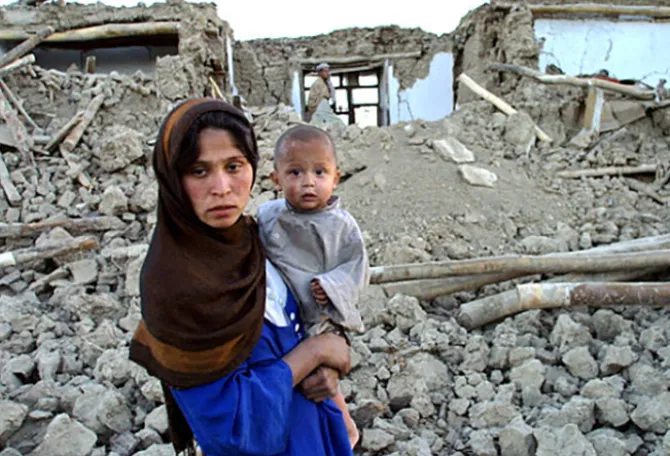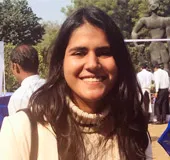-
CENTRES
Progammes & Centres
Location
In the aftermath of consecutive earthquakes in Afghanistan, the international community’s response to appeals for funding has been tepid.

On 7 October, Afghanistan’s western province of Herat witnessed a 6.3 magnitude earthquake. This was followed by a week of multiple aftershocks and earthquakes, with two more high-intensity tremors on 11 and 15 October. Compounding the already dire situation inside the country, the earthquakes ravaged villages and affected 1.6 million people, leaving 1,14,000 in urgent need of assistance. The UN Office for the Coordination of Humanitarian Affairs (UNOCHA) and other international organisations have made a joint funding appeal of $US 93.6 million as part of the Herat Earthquake Response Plan. However, the past year has seen a fall in the international community’s response to appeals for funding, which could have adverse consequences on the aid organisations’ ability to address the aftermath of the earthquakes.
Compounding the already dire situation inside the country, the earthquakes ravaged villages and affected 1.6 million people, leaving 1,14,000 in urgent need of assistance.
As per estimates from the OCHA, the cumulative effect of all the tremors and aftershocks left around 1,500 people dead, injured close to 2,000 people and destroyed and damaged more than 21,500 homes. The funding appeal of US$93.6 million is aimed at addressing the needs of 1,14,000 people in dire need over the winter period (October 2023- March 2024). Apart from homes, the quakes flattened out many health facilities, schools, and other critical infrastructure. Families have now moved into the open to safeguard against any residual aftershocks while many have attempted to migrate to other regions. The Herat city now resembles a tent city, with people seeking refuge in makeshift tents as their mud houses crumbled and families buried their dead in mass burial ceremonies across the province. Of the almost 500 villages in the province, 289 have been severely or moderately affected as per the OCHA. The quake also damaged multiple historical sites in Herat city which is a UNESCO World Heritage site with cracks and damages on the citadel, the Mosalla complex and the Great Mosque of Herat. Their destruction poses a risk to the country and its peoples’ cultural identity and collective memory which is already under threat since the Taliban’s return to power.
The Herat city now resembles a tent city, with people seeking refuge in makeshift tents as their mud houses crumbled and families buried their dead in mass burial ceremonies across the province.
The vast majority of the people who died and were affected by the impact of the earthquakes were women and children, making up 90 percent of the affected people. The first shock on 7 October was in the early hours of the day when most men had gone out for work in the fields or across the border, with mostly women, children, and elderly inside the homes. But the disproportionate impact on women is also a testament to how the Taliban’s restrictive policies towards women affect them during times of crisis. The lack of access to information about earthquake preparedness could also have affected their ability to respond to the tremors. In the aftermath of the quakes, the Taliban’s spokesperson announced the setting up of a commission to coordinate aid. The State Ministry for Disaster Management pegged the death toll at 2,445 people. It eventually brought the number down to around 1000, close to the estimates given by international organisations. As per the spokesperson, this was done to ensure that the aid is not diverted and that there is no corruption in its distribution. The Emirate also urged the international community to step in and help. While the group made sure to project that their response to the disaster was quick and efficient, there were reports about a delay in their initial response with the communities and people stepping up to help. The Emirate’s spokesperson posted on the social media platform X, formerly Twitter, that they have started building standard homes in quake-affected areas and intend to finish them before the beginning of the winter season. The Acting Deputy Prime Minister of Economic Affairs also visited the province along with a delegation to oversee the delivery of aid.
The beginning of a harsh winter also necessitates a quick and efficient response to address the issue of housing and shelter as the tents compound the risk of weather and health-related hazards.
The post-disaster aid delivery process faces myriad issues. While connectivity and communications networks have been adversely affected by the earthquakes, the supply routes for the delivery of aid could also become inaccessible soon as the winter season approaches. The beginning of a harsh winter also necessitates a quick and efficient response to address the issue of housing and shelter as the tents compound the risk of weather and health-related hazards.
Two years since the Fall of Kabul, the humanitarian situation in Afghanistan is still disastrous. As per the International Rescue Committee, cuts to humanitarian aid have led to a 60 percent increase in the number of people in need along with the collapse of the economy and climate change. The UN’s Humanitarian Response Plan had only received 23 percent of the required funds till August 2023 as opposed to 40 percent at the same time last year. The gap in funding increased after the Taliban decided to ban Afghan women from working for the UN and other international NGOs.
To address the needs of the earthquake victims, aid organisations have also redirected resources, with UNDP repurposing US$2 billion towards earthquake relief.
Almost a week since the tremors rocked Afghanistan, there have been funding commitments from some countries. On 12 October, the US special representative announced US$ 12 million in immediate aid through USAID to assist the Afghan people in accessing safe drinking water, emergency shelter kits, cooking materials, blankets, etc. Since August 2021, the US has contributed close to US$ 2 billion in aid to Afghanistan but at the beginning of this year it also admitted that owing to fiscal reasons and the need to address crises at other places, the humanitarian contribution could be lower. While Australia pledged US$1 million through the Afghanistan Humanitarian Trust Fund, the European Union committed US$ 3.71 million in aid. China also shipped emergency humanitarian aid worth US$4.1 million, with a handover ceremony held at the disaster management department of the Emirate. The United Kingdom, Iran, Saudi Arabia, Türkiyé, Kazakhstan, and Tajikistan, all announced funding commitments and relief packages. As per the OCHA, against the demand for US$93.6 million, bilateral donors and pooled funds have confirmed US$15.5 million and US$10 million respectively but the gap remains. To address the needs of the earthquake victims, aid organisations have also redirected resources, with UNDP repurposing US$2 billion towards earthquake relief. While this will help in addressing the needs of the earthquake-affected people, their diversion from other areas and communities that also require assistance is also a cause of concern. While the distribution of aid in Afghanistan has always been susceptible to corruption and diversion, the Taliban’s intransigence in addressing the concerns of the international community has further complicated the matter. As no country has granted de jure recognition to the Islamic Emirate of Afghanistan, countries have had to balance a tightrope between ensuring that they fulfil their commitment to the Afghan people while being cautious about not granting any legitimacy to the Taliban regime. The group has made efforts to establish some degree of control over the aid distribution and allocation, passing strict instructions on NGOs and making the process complicated by including the signing of Memorandums of Understanding (MoU) for every aid project. Reports about disruption in humanitarian activities have also emerged with Herat witnessing access issues in August 2023, one of the five provinces that saw interference in aid. As per a UNSC report, between February and May 2023, there were 299 incidents of interference in the delivery of humanitarian aid. All these factors do raise concerns about the possibility of aid reaching people in need. But notwithstanding these concerns, countries have attempted to carve out ways of working with specialised agencies to ensure that the aid reaches the intended beneficiaries.
As the Afghans in Herat scramble to rebuild their lives, it is difficult to understand why New Delhi hasn’t stepped up its support after such a devastating natural calamity.
India has always been committed to the welfare of the Afghan people as a first responder. Since August 2021, it has steadfastly supported Afghans by providing wheat, medicines, and COVID-19 vaccines through the World Health Organisation (WHO) and the World Food Programme (WFP), etc. New Delhi has had a functional technical mission in Kabul since June last year to help facilitate the effective delivery of aid and assistance. As the Afghans in Herat scramble to rebuild their lives, it is difficult to understand why New Delhi hasn’t stepped up its support after such a devastating natural calamity. As the country reels towards a harsh winter, the needs of the Afghan people will only increase in the coming weeks and months. Owing to Herat’s remote location, the pre-existing humanitarian concerns and a lack of global attention to the crisis in Afghanistan, the situation will take more time to stabilise, making it imperative for New Delhi and the international community to ramp up their support to the Afghan people.
Shivam Shekhawat is a Junior Fellow with the Strategic Studies Programme at the Observer Research Foundation.
The views expressed above belong to the author(s). ORF research and analyses now available on Telegram! Click here to access our curated content — blogs, longforms and interviews.

Shivam Shekhawat is a Junior Fellow with ORF’s Strategic Studies Programme. Her research focuses primarily on India’s neighbourhood- particularly tracking the security, political and economic ...
Read More +